Audi Seeks A Dakar Win In The RS Q E-Tron E2
In what is only the manufacturer's second ever factory Dakar entry, they're going for an outright win.

Given Audi’s monstrous reputation in rallying, you might not have realised 2023 marks only the second year the German car manufacturer is entering the gruelling Dakar event as a factory team. And where 2022 was all about gaining experience and testing out the first prototype car, the team performed more than admirably. No less than 4 stage wins, 14 podium finishes and 9th overall on your debut is astonishing, despite the vast resources and engineering capabilities of the brand. Now though, with a massively updated car, Audi aims for nothing less than victory! And the car that should bring home the win is the wild Audi RS Q E-Tron E2.
Just a couple of weeks ago we introduced you to the upcoming 2023 edition of the Dakar rally in Saudi Arabia. The rally is set to start on the 31st of December in the Sea Camp on the eastern shore of the country and will take drivers across 15 stages to the finish in Dammam, on the western border. The route will see each competitor, whether racing a bike, quad, buggy, car or truck, tackling over 5,000 kilometres of the most extreme terrains. They will have to navigate stretches of coastline, monstrous sand dunes and treacherous cliffs and canyons as they make their way across Saudi Arabia.
Audi & Dakar
It’s probably quite surprising to many that Audi has taken this long to enter the Dakar rally. After all, it was Audi that introduced four-wheel drive into the world of Rallying with its legendary Quattro. It dominated the early years of Group B with this technology that proved highly effective on pretty much any surface. After the Group B category was brought to a halt following several fatal incidents, a number of manufacturers turned to other iconic rallying events such as the Dakar. Peugeot is perhaps the best-known example, entering its 205 T16 and 405 T16 into the event, and winning four years in a row! So it’s perhaps a bit unexpected Audi never made this move.
Last year though, the team finally did, and boy did they bring their A-game! The 2022 edition of the Dakar saw the introduction of the T1-E category, a class specifically created for electric vehicles, or those who run on alternative fuels like hydrogen or biofuels. Audi saw this as a perfect opportunity to combine its Quattro all-wheel drive technology with its E-Tron electric powertrain platform. The result was the Audi RS Q E-Tron, a completely newly developed car that brings together the most cutting-edge technology Audi and its partners were capable of. Developed in partnership with Q-Motorsport, who won the Dakar event 6 times, the RS Q E-Tron basically broke new ground for the acclaimed rallying challenge. You can see more of the first-gen Dakar beast by Audi in the video at the end of this article.
Parts of the drivetrain came from the Audi Formula E racing car, with one motor on each axle. Audi claimed those engines achieved 97% efficiency in Formula E, so it made sense to repurpose them in the RS Q E-Tron. This was linked to a turbocharged 2.0-litre 4-cylinder engine taken from Audi’s RS5 DTM race car. No electric car can cover the course of the Dakar on pure battery power only, without some form of range-extending assistance. The whole system generates a little over 670 horsepower, which was restricted to around 400bhp as a form of balance-of-power regulation.
The car looked impressive, and unlike any road-going Audi, with a massive air intake on the roof, huge wheel arches, a stabilizing fin down the back, and a very high stance (obviously). The livery was the work of Audi’s design team and featured grey and black, with touches of red-orange throughout, something seen on other Audi sports- and race cars in recent years.
The RS Q E-Tron E2
Come December 31st, the evolution of that first RS Q E-Tron will line up at the start of the Dakar. Dubbed the RS Q E-Tron E2, this is a massively updated version of the car that raced the previous year. It’s lighter, more aerodynamic, more energy efficient and better equipped to tackle the daunting terrains the car will face. In terms of looks, the car looks slimmed down, sharper and more nimble despite the fact the overall dimensions haven’t changed that much.
The body is completely redesigned and no two panels are interchangeable with last year’s car. The new body achieves a 15% reduction of aerodynamic drag, which might not sound like much but in motorsports, every little bit counts! The weight is also reduced, and the centre of gravity has been lowered, all aimed at increasing performance and handling. Crew members also have easier access to components and systems when in need of repairs. The wheels, for instance, are lighter and with a new design, making them easier to handle and replace if needed. Each car carries two spares, mounted behind the doors on either side. The previous car hid these from sight, whereas has them partially exposed.
In terms of drivetrain, the Audi RS Q E-Tron E2 relies on an energy converter that consists of an internal combustion engine and a generator, paired with a high-voltage battery and two electric motors on the front and rear axles. Power is again capped at around 400 horsepower although the system produces far more than that. Those restrictions also limited its top speed to 170kph, a far cry from the 200kph+ speeds we’ve seen in the 1980s by cars, and even trucks! But, in all fairness, top speeds are limited for every class nowadays.
Audi has already put the RS Q E-Tron E2 through its paces during testing runs, and by competing in multi-day rallying events in previous months. It entered the Rally du Maroc in the Open Class, meaning neither of the three cars was eligible to win. Nevertheless, the performance was there as Carlos Sainz, legendary Dakar and Rally driver, beat the time set by the top T1 entries by a significant margin.
The team will field three cars for the 2023 edition of the Dakar rally, with two drivers for each car. One car will be piloted by Mattias Ekström and Emil Bergkvist, one by Stéphane Peterhansel and Edouard Boulanger, and the third and final one by Carlos Sainz and Lucas Cruz. And with such prolific names, Audi might just be able to pull off what it intends to do: win the Dakar outright for the very first time!
For more information, please visit Audi.com
Editorial Note: The images portrayed in this article are sourced from Audi and the official Dakar organisation unless stated otherwise

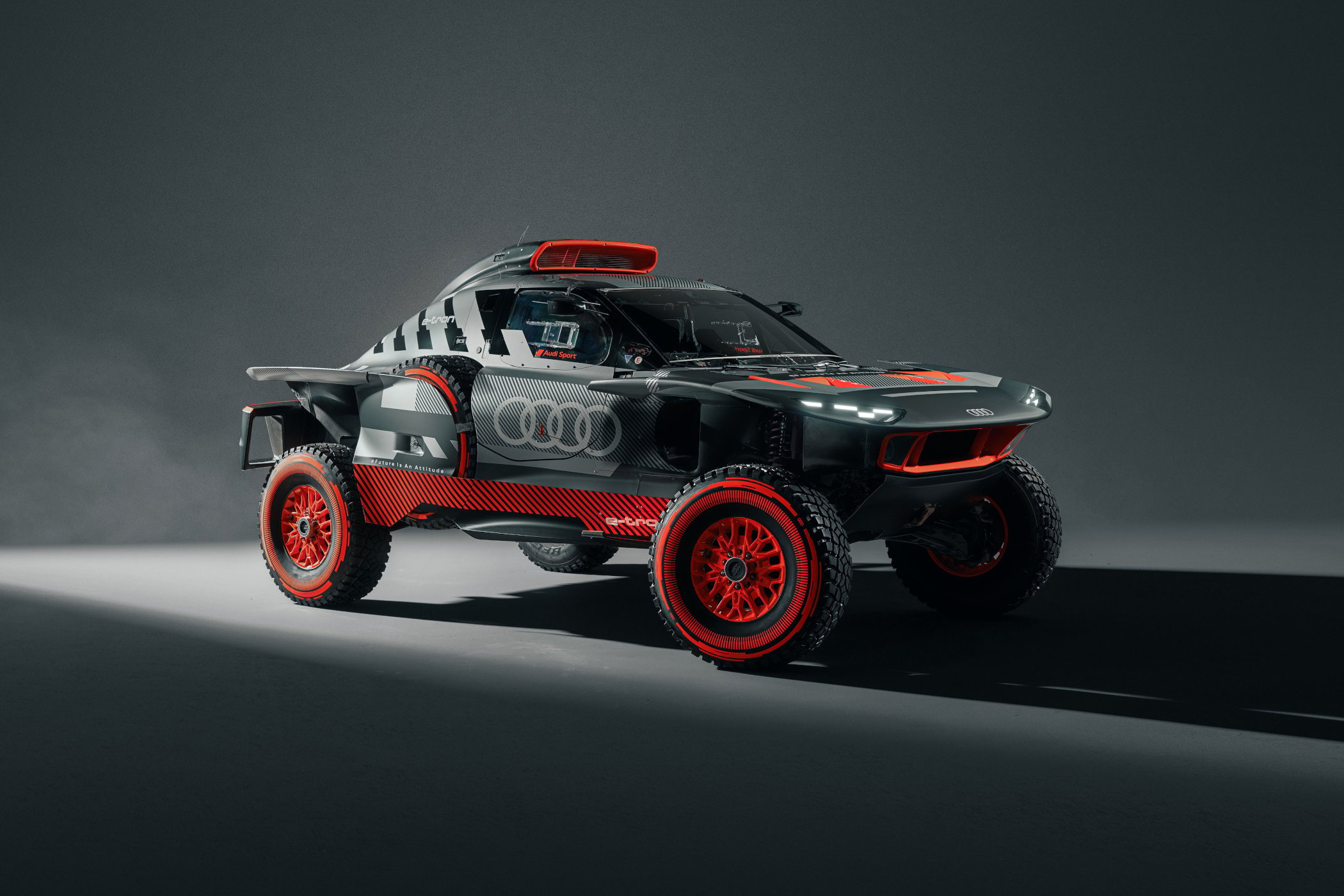
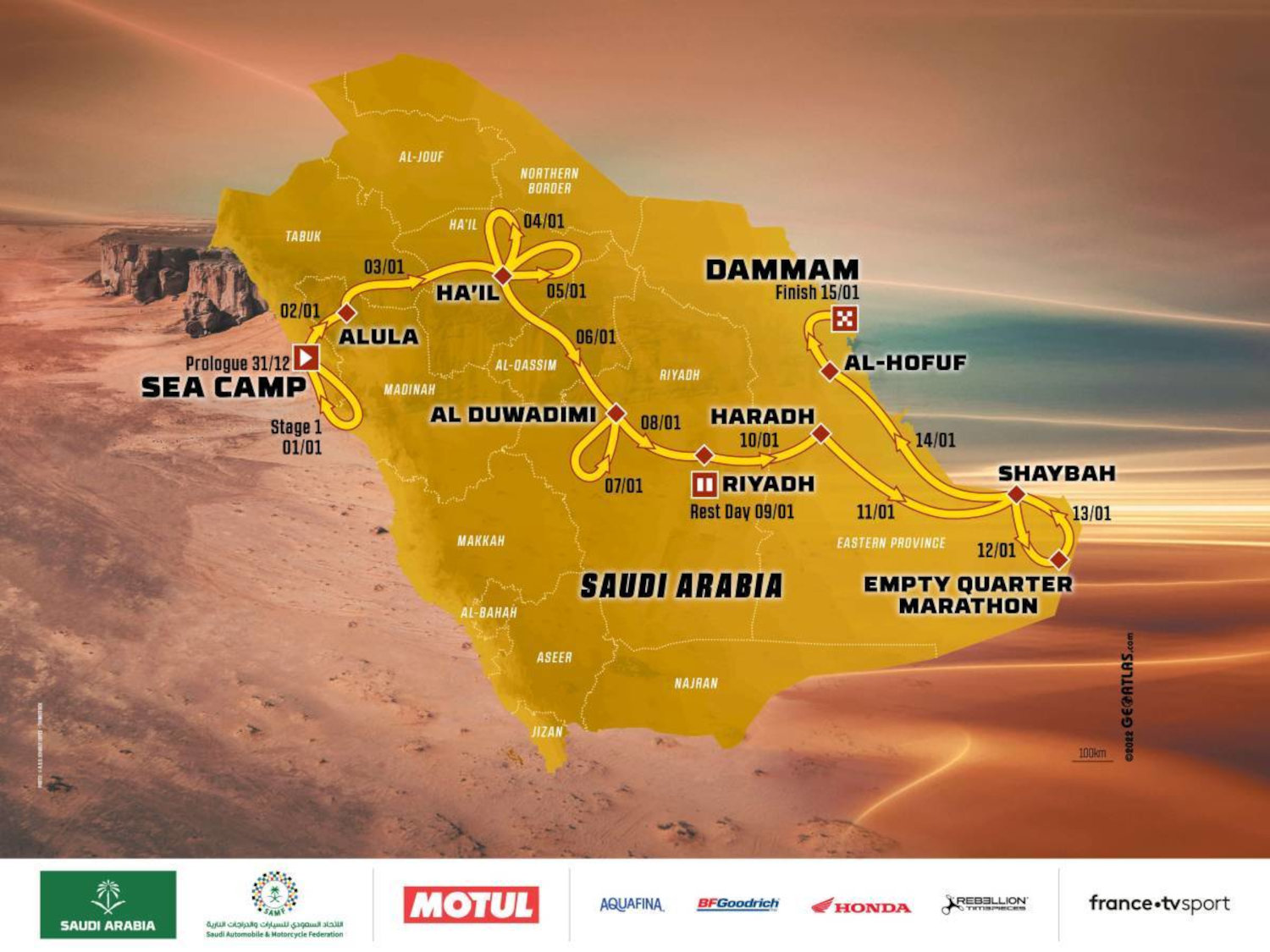


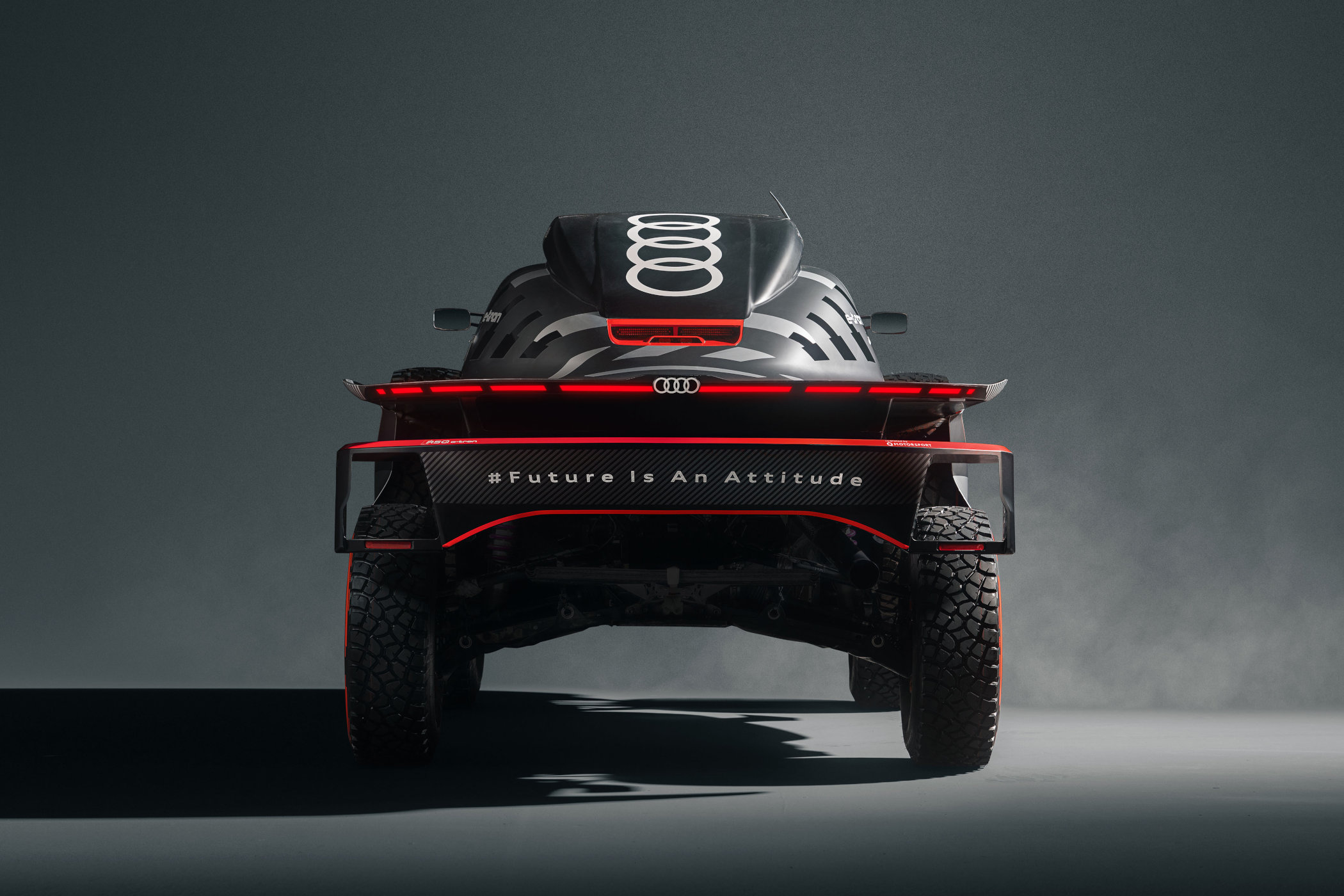
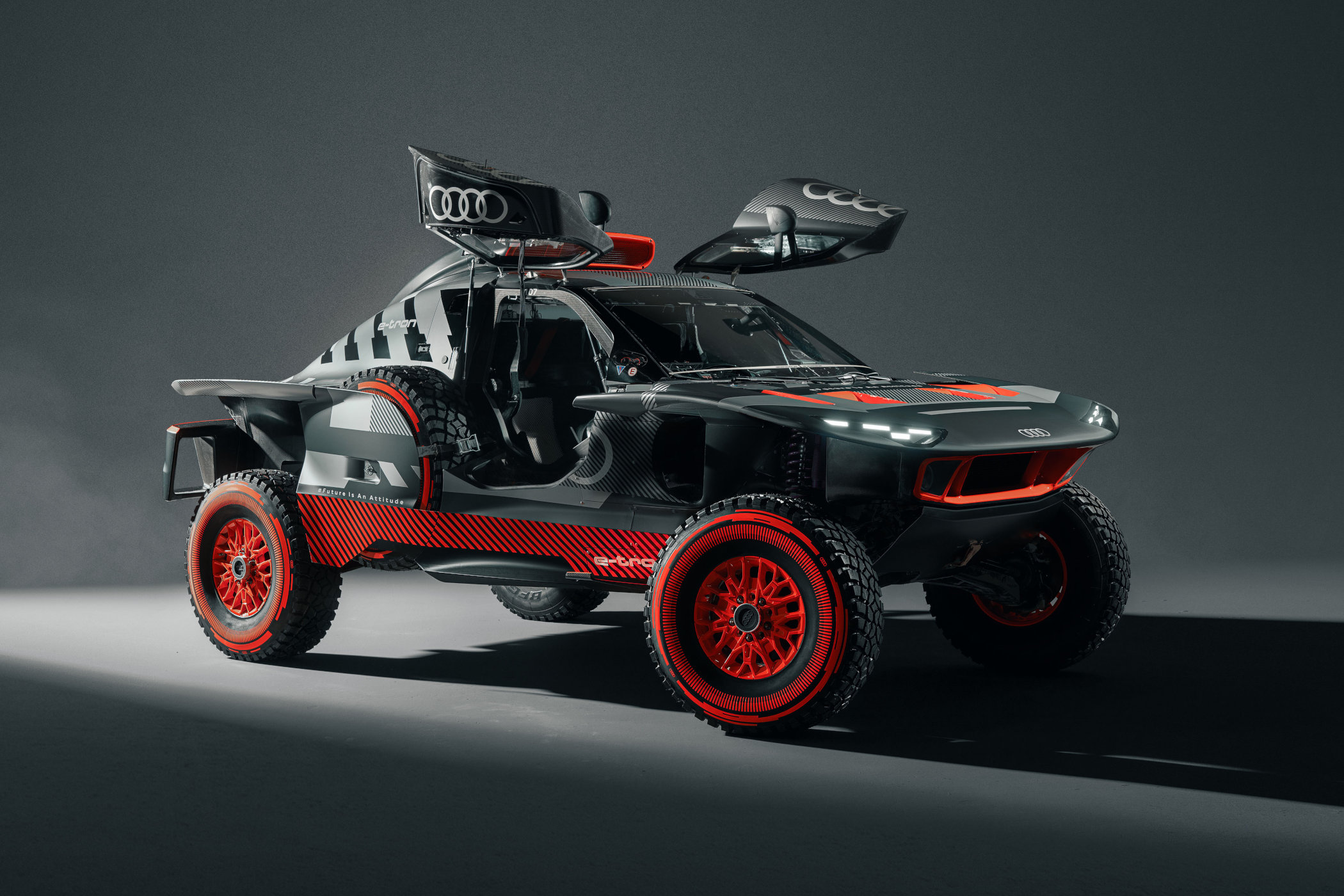
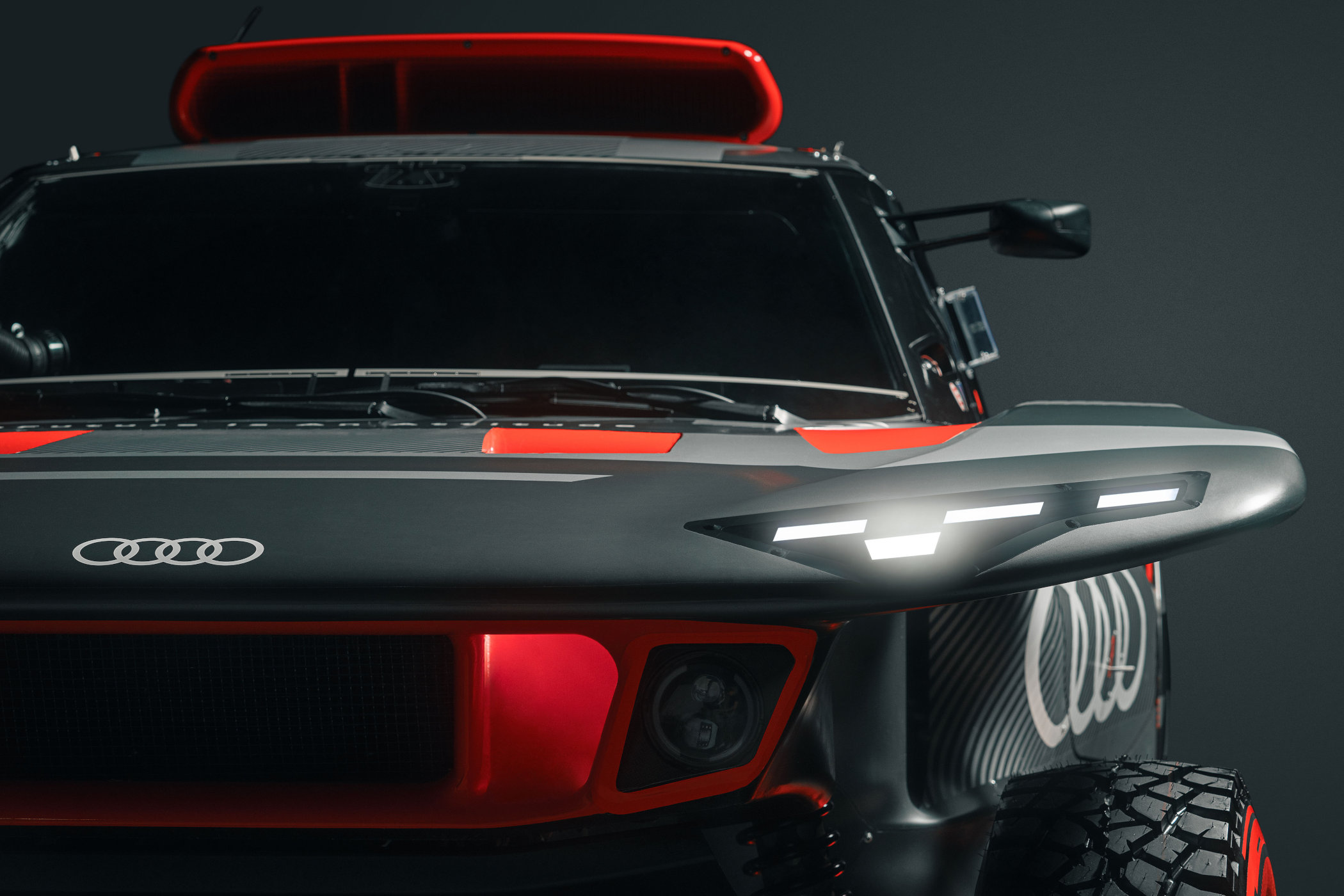
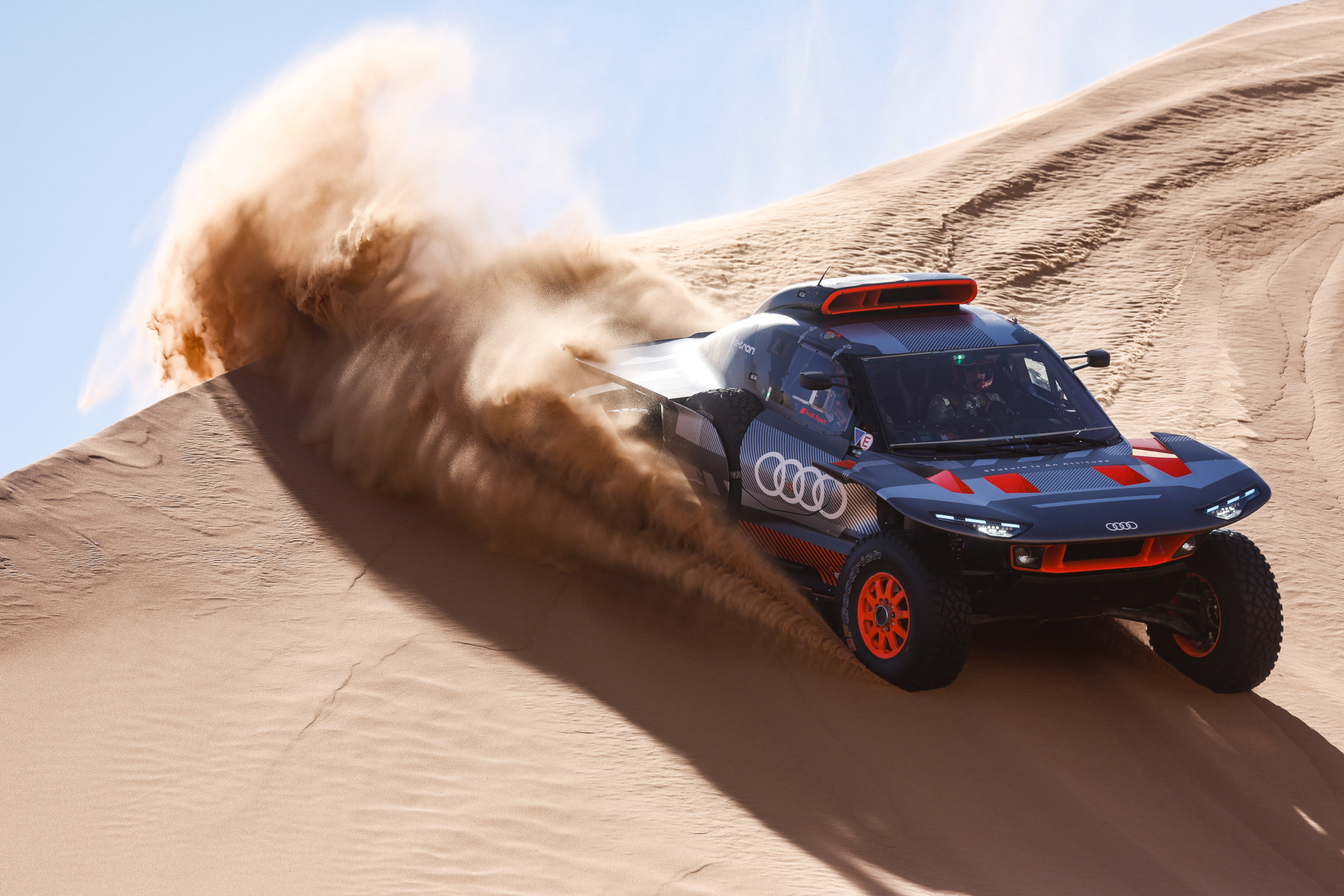

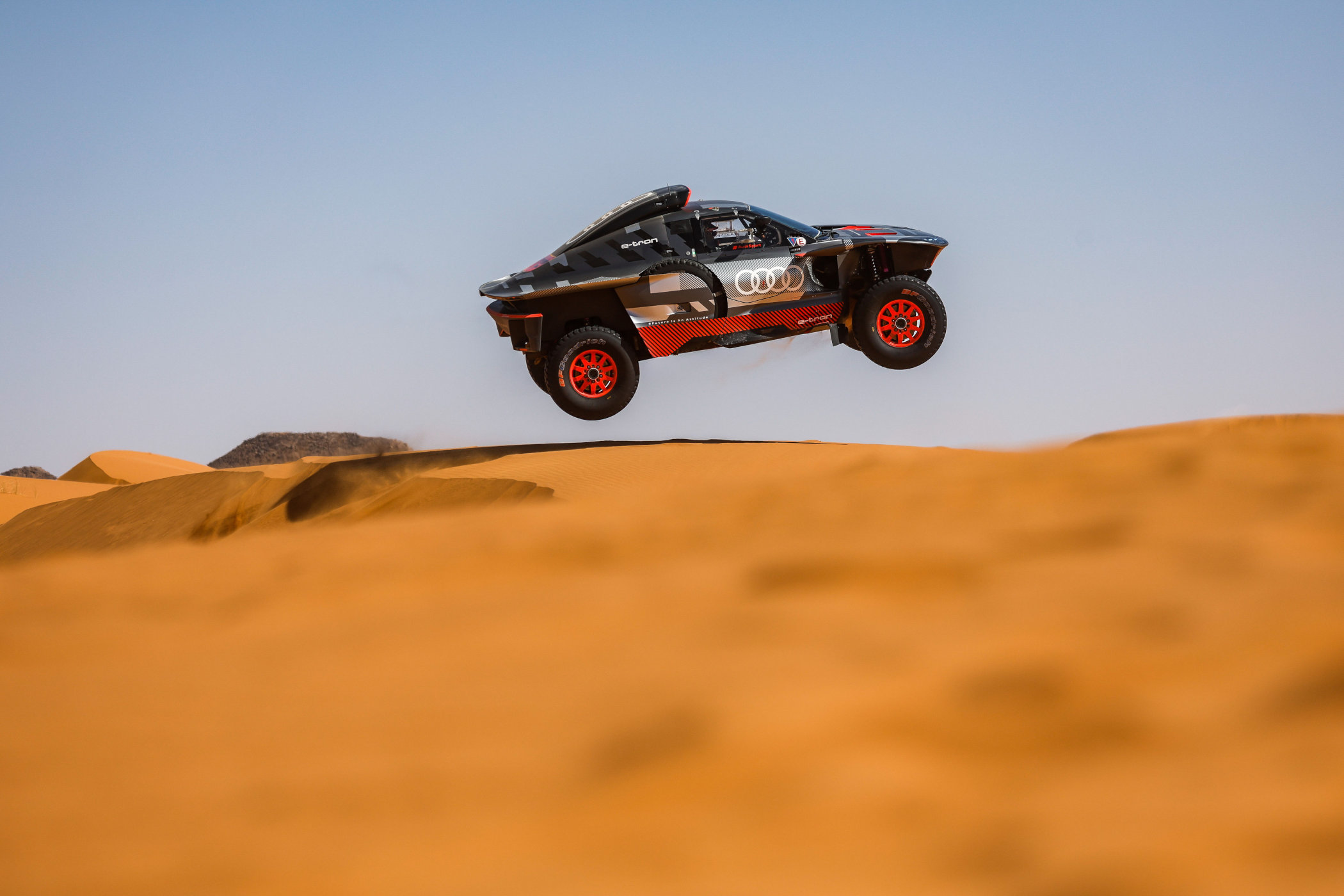
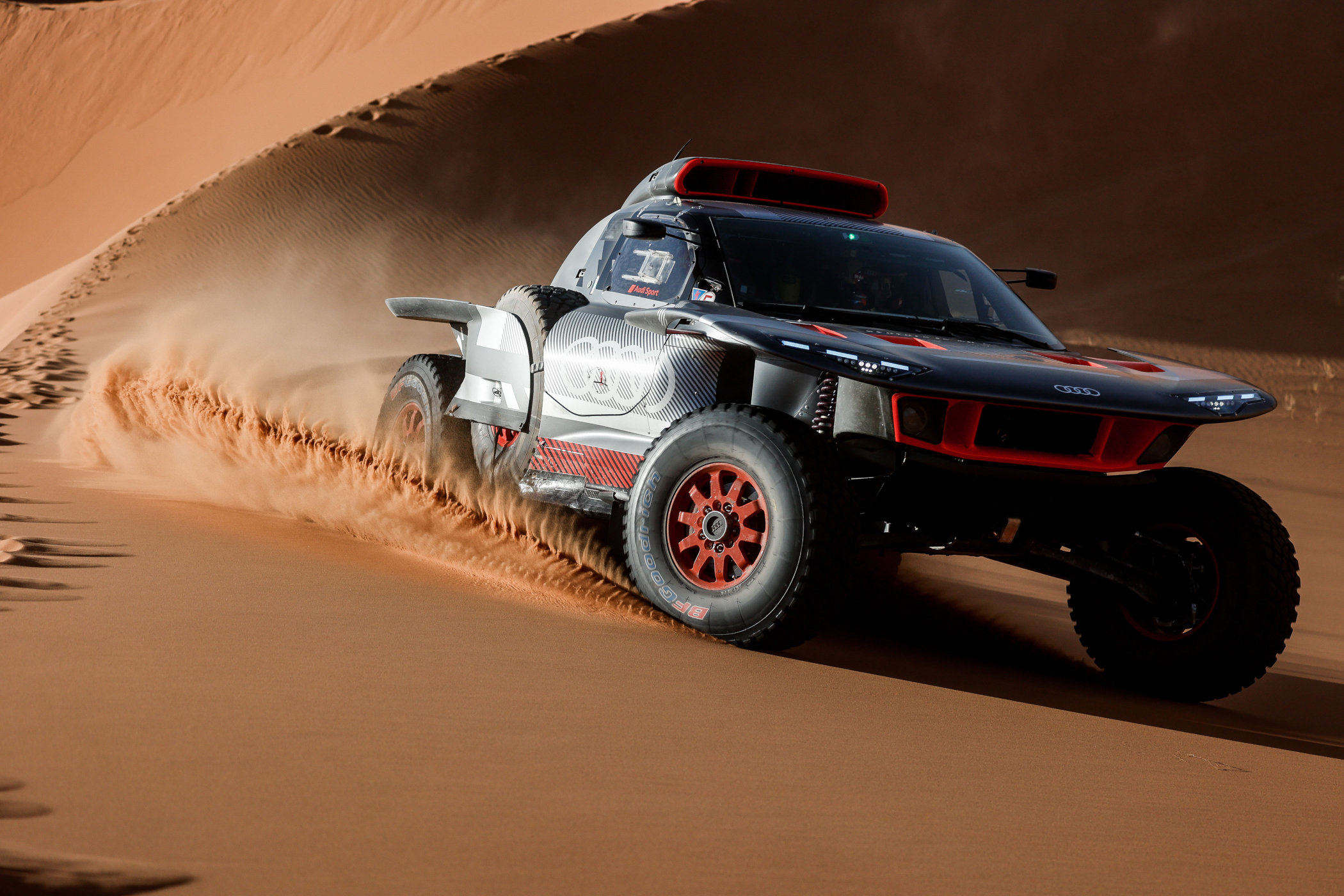
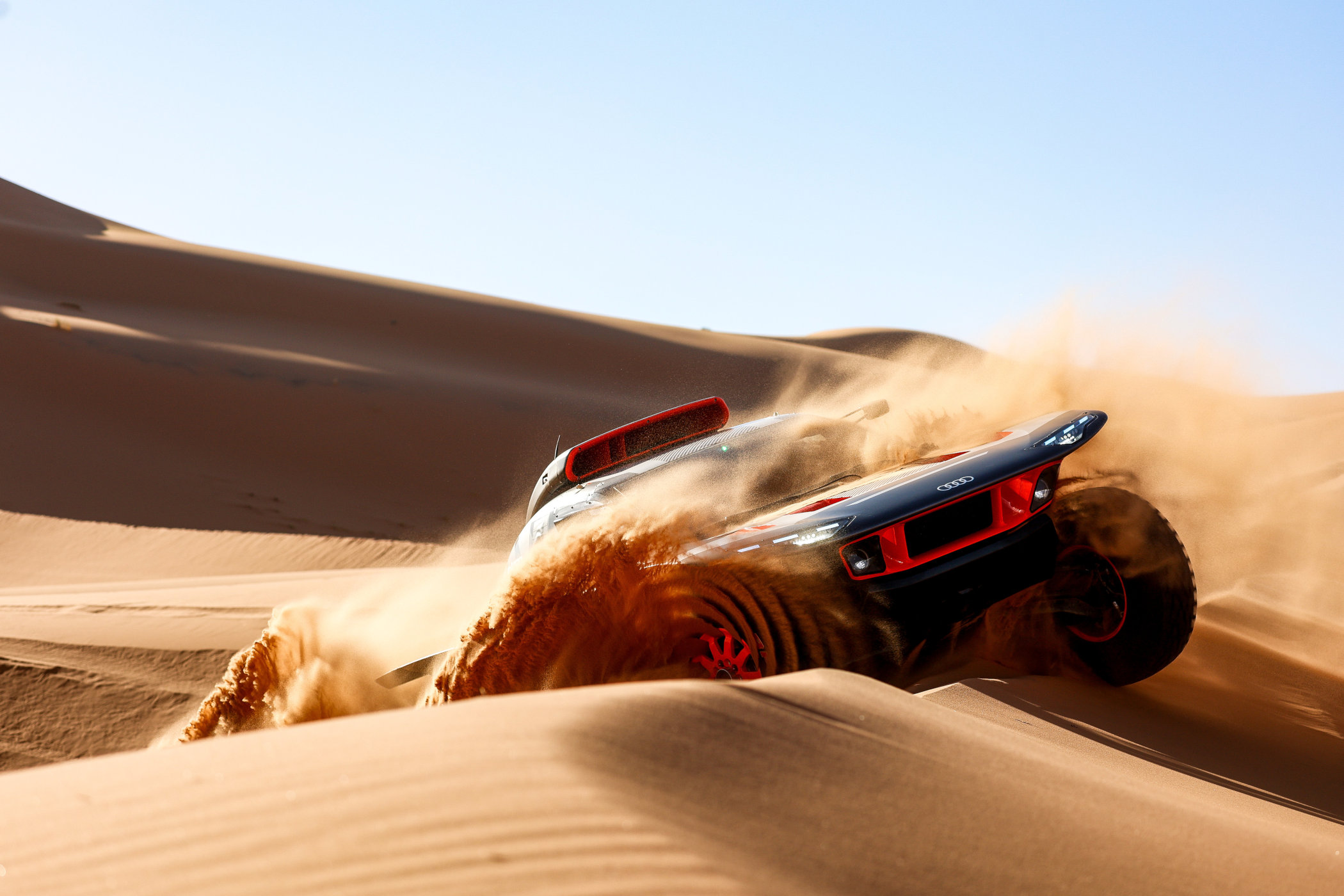
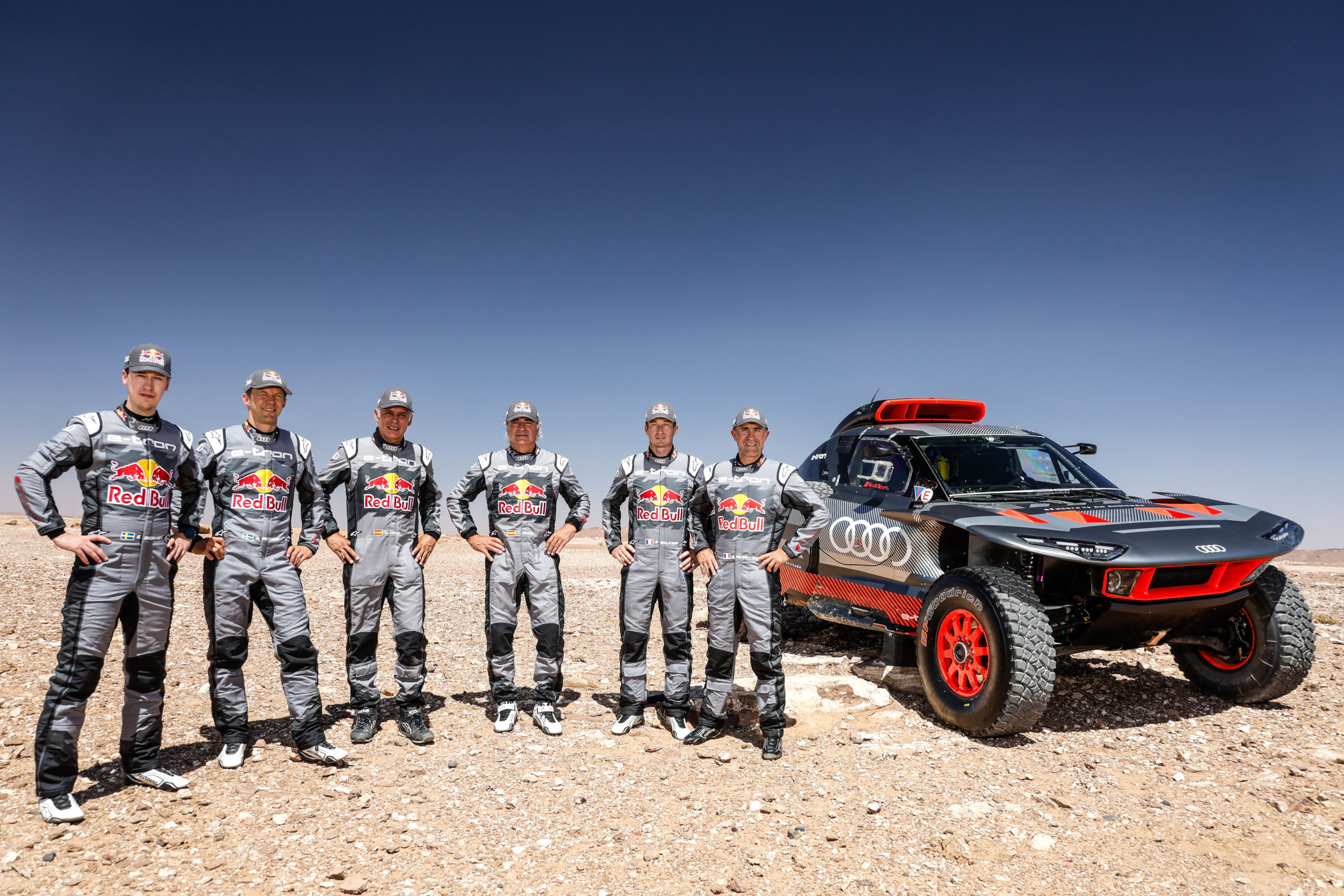



1 response
they will be testing auto-drive, soon, I heard and will have the trucks run around the cars with wireless protection fences to prevent rebel militia in Africa from hacking those electronics bots in a digital war-fare attempt.
Riders will be removed from the cars for safety reason and attached to their 4Dimension race seats in remote bunker housing the environment simulation (heat, dust, bumps, crashes) physics for controlling the correct function of that auto-drive.
Time to find another sport guys.